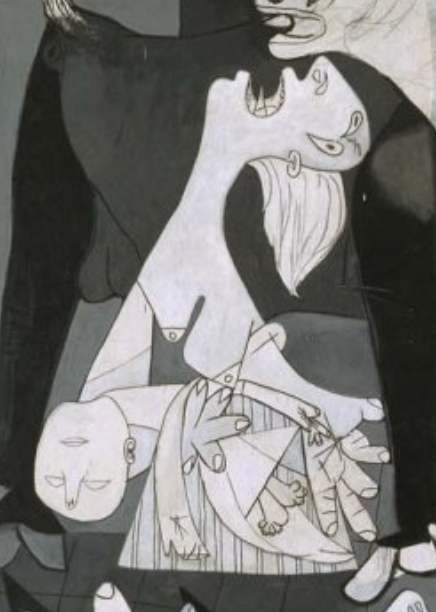
I first came across Pablo Picasso’s Guernica painting in 10th grade history class. I was astonished by the amount of detail that went into it. I felt as if it really captured the horrific event of the bombing of Guernica. This was one of my first exposures to anti-war art, and I became significantly interested in the topic since then.
The event that inspired the painting
The bombing of Guernica was one of the worst casualties to come out of the Spanish Civil War. Dropped by armed forces from Nazi Germany, General Francisco Franco and the Nationalist party created this disaster as an attempt to overthrow the democratic Republican party.
Picasso was interested in bringing his personal thoughts and life experiences onto his artworks. Through transitioning from Surrealism to Cubism, he was able to achieve this effect, and further flourished his iconic style that we know today. Interestingly enough, the artist wanted to create this painting as an apolitical artwork. However, he felt deeply sympathetic towards the victims of the Guernica bombing, changing his initial idea. In the end, Picasso finished Guernica in less than a month, especially impressive considering the painting’s gigantic size.
In a conversation between a Nazi officer and Picasso, the officer asked the artist if he created this piece. Picasso replied with a “no, you did.”
Why is it so popular?
Guernica is full of symbolism relating to the tragic event. The painting greatly captures the theme of suffering even at first glance. We see a chaotic, and messy composition from the scrambling of the subjects everywhere. Others have compared the messiness of it to war itself. There’s so much to look at; our eyes are constantly switching from one corner to the next, trying to catch every detail.
Even when we analyze even closely, the different subjects, whether it’s a human or animal, have their own story. For instance, we can see a mother with her child in her arms in the left portion of the painting, or an injured person trying to walk across the room from the complete opposite side.
This piece eventually rose to popularity at a rapid rate. It was and still is, the face of anti-war art. In a way, others would argue it’s the embodiment of peace.
Sources
https://www.khanacademy.org/humanities/art-1010/cubism-early-abstraction/cubism/a/picasso-guernica
https://www.youtube.com/watch?v=DJnH5CPCImY&ab_channel=TED-Ed



